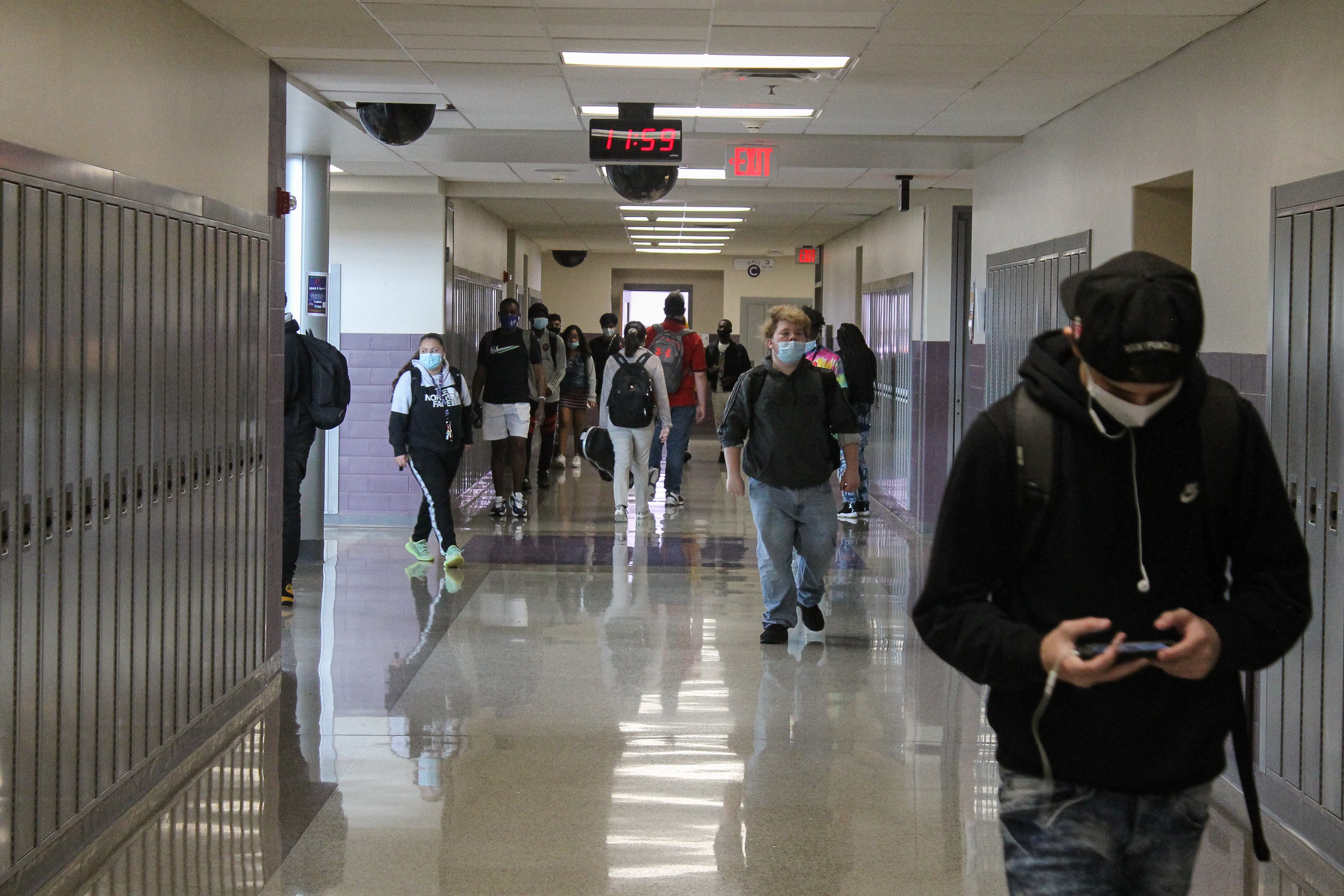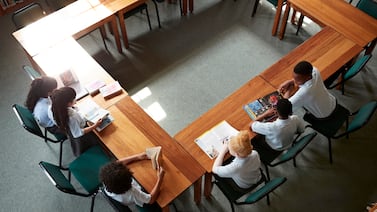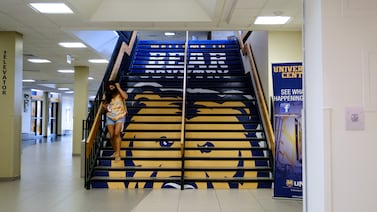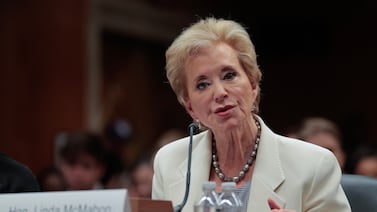Sign up for Chalkbeat New York’s free daily newsletter to keep up with NYC’s public schools.
Debate over how selective New York City high schools choose their students erupted Wednesday night, as members of a parent advisory group called on the city to adopt more stringent academic screening.
The Citywide Council on High Schools, a group of parent representatives from across the five boroughs, considered a slate of recommendations on the city’s admissions process, including reinstating the use of seventh grade state test scores at selective schools such as Eleanor Roosevelt or the Clinton School in Manhattan and allowing such schools to once again set their own admissions criteria.
But some members of the public who spoke at the meeting protested the resolution proposing the changes — arguing the old system was confusing and opaque for families, and that the recommendations could stifle integration efforts in a school system that has consistently been among the most segregated in the nation.
The Wednesday night debate followed an especially divisive parent council election cycle. Earlier this year, candidates endorsed by Parent Leaders for Accelerated Curriculum and Education, or PLACE, won all of the elected seats on the citywide high school council. The controversial group staunchly advocates for screened school admissions. (One council member was appointed by the public advocate.)
The board, composed primarily of parents whose children attend selective or specialized high schools, passed the resolution 7-1, with the no-vote from the public advocate’s appointee. Though the board lacks the power to enact the changes, its recommendations come as the latest sign of continued debate over high school admissions. (Admissions to specialized schools, like Stuyvesant and Bronx Science, are regulated by state law and were not part of Wednesday’s discussion.)
Schools have not used state tests in the admissions process for the past three years — and that change and others spurred by the pandemic moved the needle toward more diverse student bodies at selective schools.
For this fall’s incoming freshman class, students were sorted into different priority groups based on their seventh grade GPAs in core subjects. In cases where there were more applicants in a priority group than seats, selections were made on a lottery basis. More than 40 selective schools also participate in a diversity initiative, setting aside a certain number of seats to students who are low-income, English language learners, or live in temporary housing. There was a separate lottery for these seats.
The recommendations passed by the council call for the city to allow students to qualify for priority groups based on their grades or state test scores.
Parent arguments over admissions get heated
Tensions rose to a fever pitch during the meeting, as some parents who joined virtually argued with one another in the chat, and members of the public voiced contrasting views. In one particularly heated moment, council member Deborah Kross accused a public speaker opposing the resolution of “running a consultancy for districts.”
Kemala Karmen, the speaker, denied the allegation and said she was a parent and member of NYC Opt Out, a grassroots organization boycotting state tests. During her comment, Karmen said council members were elected amid low turnout and were not representative of NYC public school families.
“This message is for the chancellor, deputy chancellor, and whoever else it may concern: Do not mistake this vote and their resolution as representative of the wishes of families of New York school children,” she said.
Katrina Motch, a parent who said her two children had experienced the high school admissions process in 2019 and 2022, also opposed the resolution, noting the prior system had been particularly confusing and burdensome for parents.
“In 2019, every single school had a different criteria, a different interview, a different thing,” she said, adding it created “incredible stress for parents.”
Others spoke in favor of the resolution, complaining that using lottery numbers within priority groups was unfair and that school grades were too subjective a metric.
Chien Kwok, co-president of PLACE, called the use of a lottery “entirely demotivating for children.”
He added: “Grades are subjective and outright fraudulent, used to hide the failures of the DOE to teach our children.”
High school admissions process remains in flux
The high school admissions system in New York City is notoriously complicated. It saw multiple pandemic-related overhauls, as COVID-19 upended many of the metrics used to screen and sort students. Prior to the pandemic, schools could set their own screening processes, meaning students and families had to search for the criteria at each school. Admissions requirements ranged from essays and tests to interviews — and information about how decisions were made was sometimes difficult to locate or unavailable.
About 20 of the most coveted selective schools — like Beacon High School and Bard Early College — continued to use their own assessments like essays or school-based tests during the last admissions cycle.
Council members said the city should reduce the use of lotteries in making admissions decisions by allowing the roughly 100 other selective schools to once again set their own criteria — stating that thousands of applicants were left with “unsatisfactory placements.” The last admissions cycle saw just under half of eighth graders admitted to their top choice school, with roughly 75% admitted to one of their top three schools, and 95% offered a spot at a school they listed in their application.
Integration advocates and families in favor of the recent changes have said the standardizing of admissions criteria and other pandemic changes helped make the process more accessible and removed barriers for students.
Those gains held fairly steady for this year’s incoming ninth graders. Roughly 32% of offers at selective schools went to Latino students, followed by 25% to Asian American students, 19% to Black students, and 17% to white students. Roughly 66% of the offers went to students from low-income families.
Citywide, roughly 41% of students are Latino, 20% are Black, 19% are Asian American, and 16% are white, according to enrollment data from last school year. About 72% are from low-income families.
To Nyah Berg, executive director of New York Appleseed, an organization that advocates for integrated schools, the aims of the resolution represent a step backwards.
“We’re talking about access to public schools, and I think people forget that,” she said. “To think that we need to stop having this lottery so we can make the schools more selective — they’re public schools. People should have as much access and opportunity as possible.”
Berg also questioned whether the board’s decision reflected the broader sentiment of New York City families.
“The majority of parents that sit on the [council] are parents of students at specialized high schools,” Berg said. “An overwhelming majority of students are not going to specialized high schools.”
Julian Shen-Berro is a reporter covering New York City. Contact him at jshen-berro@chalkbeat.org.






